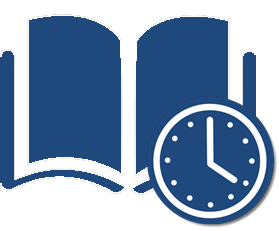Why Accessibility Matters
Rob Power
An Open Door
It’s often said that an image speaks a thousand words… so let’s start with one. I’m not going to comment on it here. We’ll save that for a discussion during our first class session. What does this image say about accessibility in an educational technology context?

Rob’s Background in Accessibility and Instructional Design
(Excerpt from Power, 2023, Chapter 17: Accessibility in Online Learning)
For me, accessibility issues are something that started out as a professional interest. While working as an instructional developer at College of the North Atlantic-Qatar, I had the opportunity to learn about creating accessible documents through a professional development opportunity hosted by the Mada Assistive Technology Centre (Mada, 2017). While working with the Online Learning team at the Fraser Health Authority, I had the opportunity to explore accessibility issues in education more deeply by participating in the University of Southampton’s Digital Accessibility: Enabling Participation in the Information Society course (FutureLearn, n.d.). But, in recent years my interest has become more personal because I have two children with very different accessibility needs. I have also worked with students who have had documented accessibility needs, and I suspect that there have been many others who had needs that they either had not disclosed, or that they themselves were not even aware of.
It is likely that you will be working with students who have either documented, undisclosed, or perhaps undiagnosed needs that will be impacted by how you prepare and present your digital learning resources. As Doyle (2021) points out, “22% of Canadians over the age of 15 live with at least one disability that limits their everyday activities.” According to Dyslexia Canada (n.d.), “15-20% of the population has a language-based learning disability,” such as Dyslexia, meaning that nearly one in five of your students will likely be impacted by basic readability accessibility accommodations when creating your digital learning resources. Many Canadian jurisdictions have already enacted legislation dictating Digital Accessibility standards for instructional design of courses, as well as for digitally-mediated communications with our students, their parents, our colleagues, and the general public. In Canada, Ontario was the first province to explicitly codify Digital Accessibility standards through the Accessibility for Ontarians with Disabilities Act (AODA, 2005). Provinces such as Manitoba, Nova Scotia, and Quebec all have similar existing laws, while others such as British Columbia have legislation in the proposal stages (Doyle, 2021). Most of the standards that these provinces have put forth are based on the World Wide Web Consortium’s Web Content Accessibility Guidelines (W3C, 2022).
It is unreasonable to expect that all teachers will be well-versed in all of the web-content authoring guidelines or the range of digital tools available to support the variety of accessibility needs of their students. However, it is important for everyone to be aware of certain basic accessibility standards. In some jurisdictions, you may be required to meet these basic standards whether or not you are aware of a particular student who needs accommodations (Ontario Human Rights Commission, 2016). These efforts represent small changes in practice that benefit all of our students, not just those with diagnosed needs.
Why Web Accessibility Matters
When trying to increase engagement and reduce barriers for our learners, it’s essential to make sure learning resources and experiences are accessible by all potential learners. David Burmen (2014) discusses why we should care about Web Accessibility:
Longer Reads
 Check out the following chapters by Digital Education Strategies (2019a, b) for further discussion of the importance of digital accessibility in teaching and learning. (Note — these longer reads are optional if you have been assigned to read this chapter as part of one of my courses!)
Check out the following chapters by Digital Education Strategies (2019a, b) for further discussion of the importance of digital accessibility in teaching and learning. (Note — these longer reads are optional if you have been assigned to read this chapter as part of one of my courses!)
- Digital Education Strategies, The Chang School (2019a). The Business Case for Web Accessibility. In Introduction to Web Accessibility: Essential Accessibility for Everyone. Toronto Metropolitan University. https://pressbooks.library.torontomu.ca/iwacc/chapter/the-business-case-for-web-accessibility/
- Digital Education Strategies, The Chang School (2019b). The “Curb Cut” Effect: An Accessible Web Benefits All. In Introduction to Web Accessibility: Essential Accessibility for Everyone. Toronto Metropolitan University. https://pressbooks.library.torontomu.ca/iwacc/chapter/curb-cuts/
References
Accessibility for Ontarians with Disabilities Act (2005, S.O. 2005, c. 11). https://www.ontario.ca/laws/statute/05a11
Berman, D. (2014, May 13). Web Accessibility Matters: Why Should We Care. [Video]. https://youtu.be/VIRx3RJzbZg
Digital Education Strategies, The Chang School (2019a). The Business Case for Web Accessibility. In Introduction to Web Accessibility: Essential Accessibility for Everyone. Toronto Metropolitan University. https://pressbooks.library.torontomu.ca/iwacc/chapter/the-business-case-for-web-accessibility/
Digital Education Strategies, The Chang School (2019b). The “Curb Cut” Effect: An Accessible Web Benefits All. In Introduction to Web Accessibility: Essential Accessibility for Everyone. Toronto Metropolitan University. https://pressbooks.library.torontomu.ca/iwacc/chapter/curb-cuts/
Doyle, J. (2021, May 26). A Complete Overview of Canada’s Accessibility Laws. [Web log post]. Siteimprove. https://siteimprove.com/en-ca/blog/a-complete-overview-of-canada-s-accessibility-laws/
Dyslexia Canada (n.d.). Dyslexia Basics. [Web page]. https://www.dyslexiacanada.org/en/dyslexia-basics
FutureLearn (n.d.). Digital Accessibility: Enabling Participation in the Information Society. [Massive Open Online Course]. https://www.futurelearn.com/courses/digital-accessibility
Giangreco, M,, and Ruelle, K. (2002). Shovel the Ramp. [Image File]. https://i.pinimg.com/originals/41/30/bf/4130bfbc91e95ad1fc42a5540e6ab909.png
Mada (2021). Mada Assistive Technology Centre. [Web page]. https://mada.org.qa/en/Pages/default.aspx
Ontario Human Rights Commission (2016, January 6). New documentation guidelines for accommodating students with mental health disabilities. [Web page]. https://www.ohrc.on.ca/en/news_centre/new-documentation-guidelines-accommodating-students-mental-health-disabilities
Power, R. (2023). Chapter 17: Accessibility in Online Learning. Everyday Instructional Design: A Practical Resource for Educators and Instructional Designers. Power Learning Solutions. https://pressbooks.pub/everydayid/chapter/accessibility-in-online-learning/
W3C (2022). Web Content Accessibility Guidelines (WCAG). [Web page]. https://www.w3.org/WAI/standards-guidelines/wcag/
